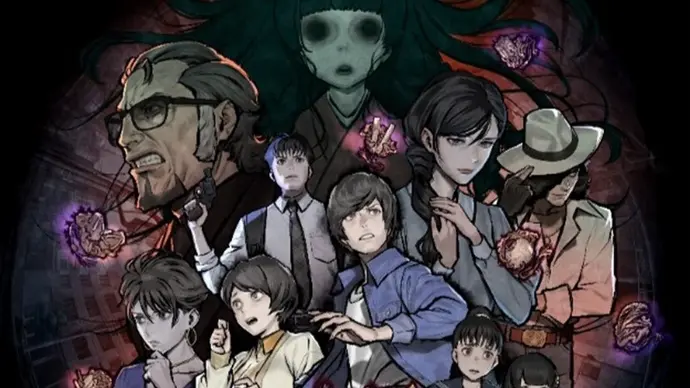
Alert! What noise is that? A vehicle misfiring? A bullet? A collision between trains at a crossing gate? The sound of comprehension in Paranormasight is that crashing noise—brisk but highly layered, with a hint of metal. The instant a character connects two seemingly unrelated story points, it ignites. It’s like the old saying “drop a penny.” It’s the fingerpost instance. Whoa! Additionally, because this is a gloomy fairy tale, oh no.
Tokyo’s Sumida Ward serves as the setting for the visual novel Paranormasight. It feels like we’re in the past since the TV sets still come in lacquered oak cases and the telephones are outdated bakelite models. Additionally, we’re not too far from our own reality. Individuals are prone to bizarre jumps in reasoning and are open to weird stories. Even though we can spin a full 360 degrees, we are frequently held in place, which helps us take in our surroundings and position ourselves for a jumpscare. The colors seem to be coming from within, as though they are being viewed through a malfunctioning 1980s television tube. They are dull greys, blues, and sickly creams that sizzle and pulse a little.
I will now put this behind me. This game is amazing. It seems fascinating, clever, and eerie to me. Furthermore, the setup is quite peculiar. A group of strangers are drawn together one evening in Honjo by an old mythology consisting of seven stories about ghosts from the past that are connected to particular areas of the neighborhood and hazy rumors about an old ritual that has the power to revive the dead. However, the ceremony is unclear since, similar to old ghost stories, its intricacies and borders have been worn away with time. And it seems that killing someone is the only way to start the rite?
That’s the setup; I believe any more would put us in the spoiler zone. Going in, I would most definitely not want to know more than this.
Instead, awe at how cleverly this game is designed. Paranormasight is similar to a typical visual novel in many aspects. You switch between different characters and locations at different times, allowing you to have lengthy, multi-part conversations with people you meet and eliciting streams of consciousness from you about details of the surrounding area, telephone booth, and stranger lingering in the distance. You may always click the THINK button (which I wish I had in real life) to see the decisions your controlled character has made based on all of the knowledge you have gained. Thus, you go around like a text vampire, attempting to extract as many words and meanings as you can from the surroundings, the occasion, and the people you encounter, in order to have a greater supply of material for the riddles and the parts of the narrative where you have to piece things together.
But what I really like about this scene is how Paranormasight’s continuous viewpoint changes—from one character to another—combine with the eerie surroundings and the condensed amount of time to produce incredible suspense. And knowledge is virtually always the source of this friction. Who is more knowledgeable than me? Who doesn’t already know what I recently discovered? How can I find the last piece of the puzzle that eludes me, and who can I talk to about it? It’s one of those games where everything may matter, even the exact moment you enter a new area, aside from a character. Furthermore, a great deal of this knowledge is subjective. Two people who arrive on the same little street respond to it differently: a refined woman stifles a shiver at being so close to poverty, while an experienced police officer muses on what such a confined place would entail for possible witnesses.

As you read more into the story, this line of reasoning expands since, at its core, intentions are the mystery at hand. What do the individuals you have met and traveled with on this unique night, and the sickly grey day that follows, really want for if they had the chance to attain incredible power? What may they be prepared to give up in order to fulfill that wish? And is there anyone in the ensemble who might desire everything even more?
Such a match. A maze of motivations, made all the more exciting by unforgettable characters—some of whom deftly defy stereotypes—whimsical moments, and static art that has a special knack for eyes and the way that eyes may betray a person’s inner existence. And the scene! One night and one gloomy, empty day in Tokyo, with the buildings’ stark walls made of bleached concrete, the sky laced with telephone and electricity lines, and the webs of all that data buzzing around.

Show me a Sony first-party game that doesn’t have an atomizer blast of Prestige Telly to it. A lot of games these days aim to be on TV. I’m reminded of a whole other form of TV by paranormasight. You flick on BBC 2 in the 1990s at approximately 11.30 p.m. because you can’t sleep and there’s something strange and niche on that no one at school has heard of or been watching. However, after five minutes, you find it impossible to release go.
That’s why Paranormasight is enjoyable. A ghost story, a mystery, and a conundrum that the player on the other side of the screen is actually tormented by.